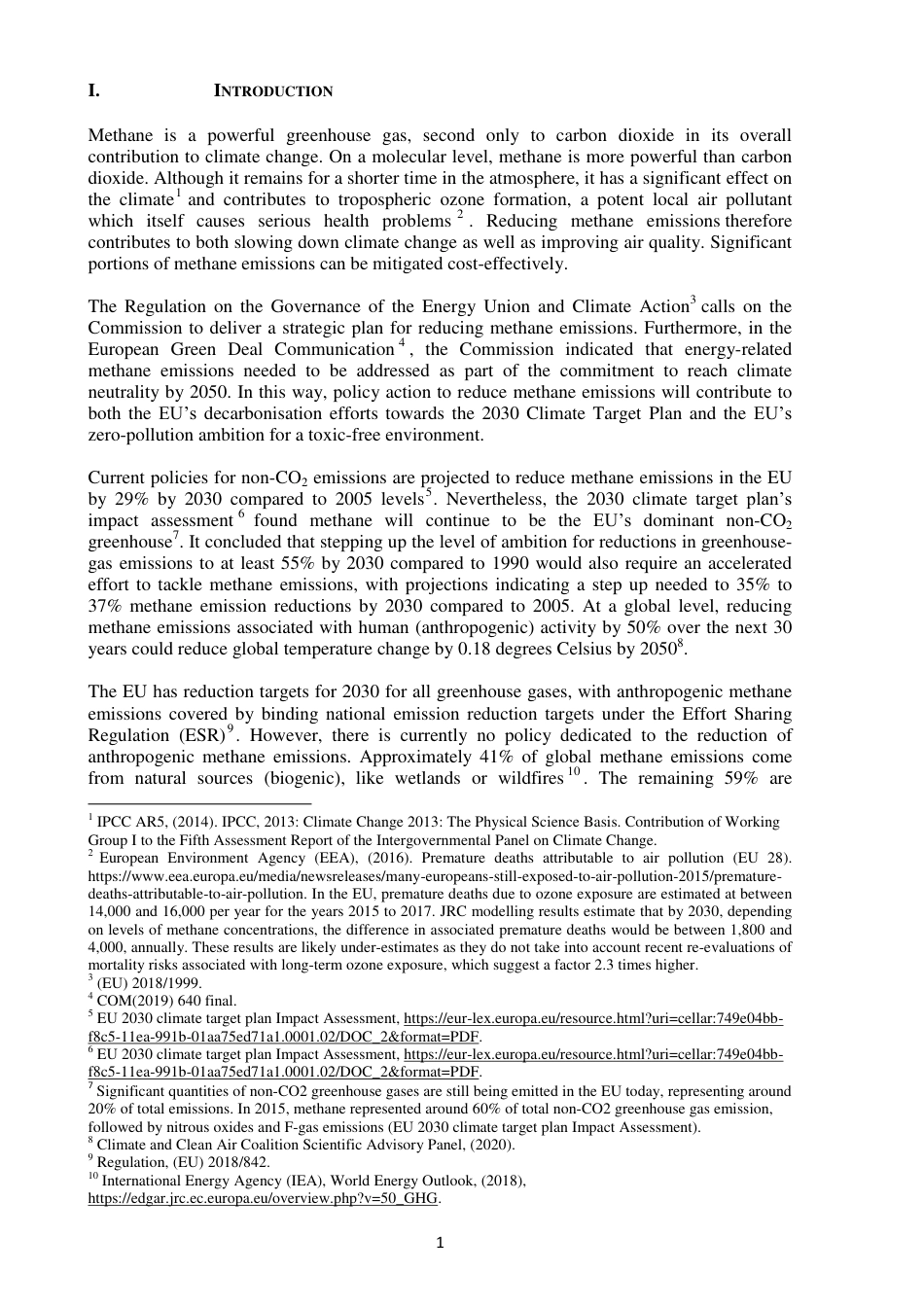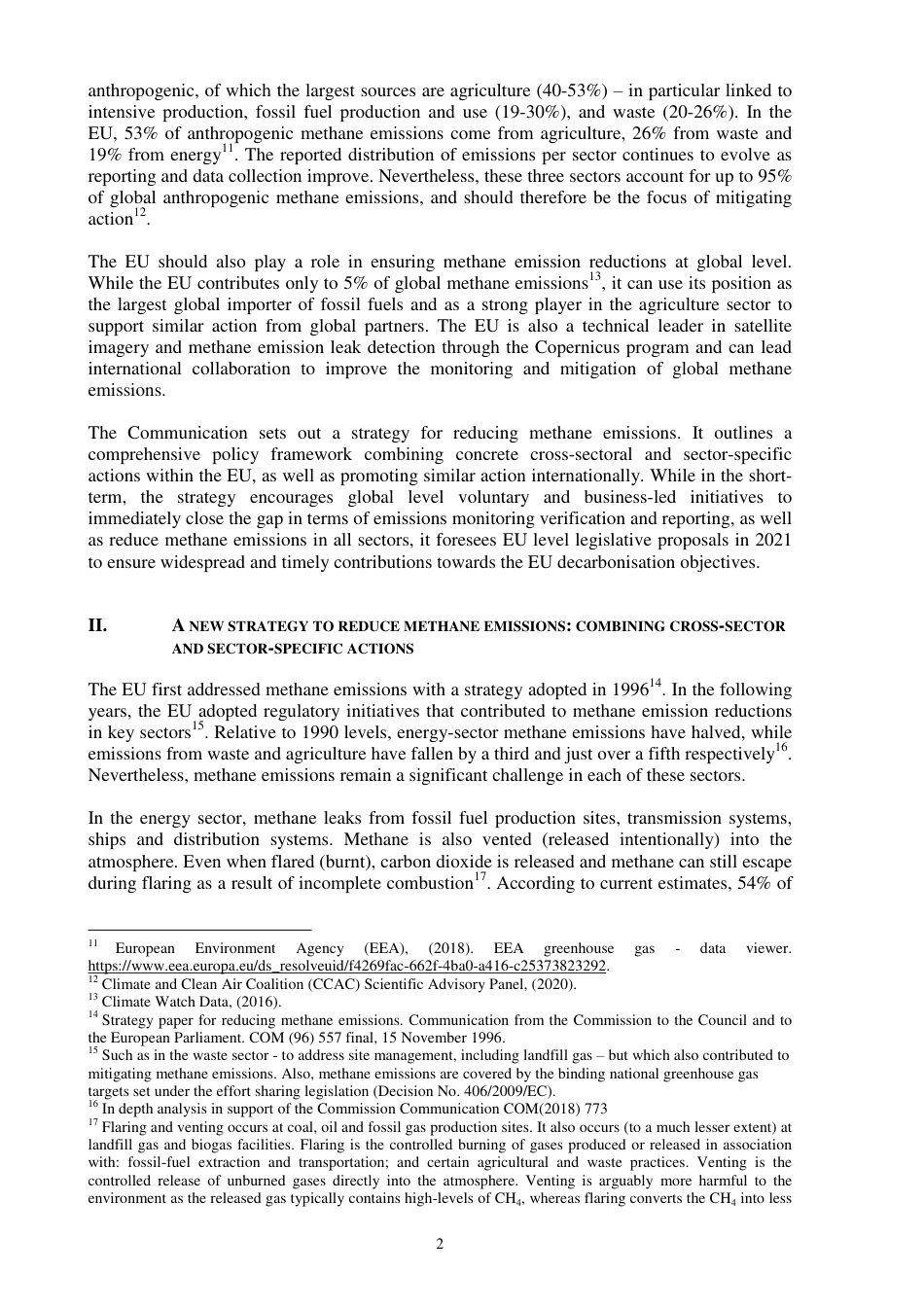EN EN EUROPEAN COMMISSION Brussels, 14.10.2020 COM(2020) 663 final COMMUNICATION FROM THE COMMISSION TO THE EUROPEAN PARLIAMENT, THE COUNCIL, THE EUROPEAN ECONOMIC AND SOCIAL COMMITTEE AND THE COMMITTEE OF THE REGIONS on an EU strategy to reduce methane emissions 1 I. INTRODUCTION Methane is a powerful greenhouse gas, second only to carbon dioxide in its overall contribution to climate change. On a molecular level, methane is more powerful than carbon dioxide. Although it remains for a shorter time in the atmosphere, it has a significant effect on the climate1 and contributes to tropospheric ozone formation, a potent local air pollutant which itself causes serious health problems 2 . Reducing methane emissions therefore contributes to both slowing down climate change as well as improving air quality. Significant portions of methane emissions can be mitigated cost-effectively. The Regulation on the Governance of the Energy Union and Climate Action3 calls on the Commission to deliver a strategic plan for reducing methane emissions. Furthermore, in the European Green Deal Communication 4 , the Commission indicated that energy-related methane emissions needed to be addressed as part of the commitment to reach climate neutrality by 2050. In this way, policy action to reduce methane emissions will contribute to both the EU’s decarbonisation efforts towards the 2030 Climate Target Plan and the EU’s zero-pollution ambition for a toxic-free environment. Current policies for non-CO2 emissions are projected to reduce methane emissions in the EU by 29% by 2030 compared to 2005 levels5. Nevertheless, the 2030 climate target plan’s impact assessment 6 found methane will continue to be the EU’s dominant non-CO2 gree...



